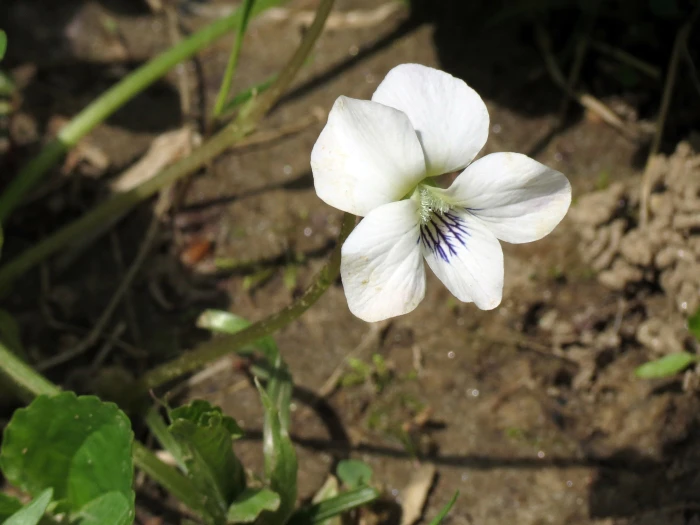Striped Cream Violet
(Viola striata)
Striped Cream Violet (Viola striata)
/
/

Katja Schulz
CC BY 4.0
Image By:
Katja Schulz
Recorded By:
Copyright:
CC BY 4.0
Copyright Notice:
Photo by: Katja Schulz | License Type: CC BY 4.0 | License URL: http://creativecommons.org/licenses/by/4.0/ | Rights Holder: Katja Schulz | Publisher: iNaturalist | Date Created: 2018-04-21T13:26:21-07:00 |

















































Estimated Native Range
Climate Requirements for Delano, California
| This Plant | Your Site | Plant Suitability for Your Location | ||
|---|---|---|---|---|
| • Precipitation | 13" - 75" | 8" | Your precipitation may be insufficient for this plant. Irrigate N" / year. | Irrigate N" / year |
| • High Temp. | 64°F - 93°F | 99°F | Your summers may be too hot for this plant. | Too hot |
| • Low Temp. | -29°F - 32°F | 35°F | OK, but your winter temperatures are warmer than normal for this plant | OK |
This plant should grow well at your location with about N inches per year (Y minutes per month) of irrigation.
Summary
Viola striata, commonly known as Striped Cream Violet, is a deciduous perennial herb native to rich woods, meadows, and stream banks in Central and Eastern North America. It typically grows to a height and width of 0.8-1 feet (0.2-0.3 meters). The Striped Cream Violet is characterized by its heart-shaped leaves and striking flowers, which are white with fine, purple lines radiating from the center, blooming in the spring and early summer. The flowers are modest in size but can be quite showy when the plant is grown in mass. This species does not produce notable fruit or berries.
The Striped Cream Violet is valued for its ornamental flowers and as a ground cover in shaded garden areas. It is also appreciated for its edible leaves and blossoms, which can be used in salads or to make decorative jellies. In cultivation, it prefers part shade, though it can tolerate more sun in cooler climates. It requires medium to high amounts of water and thrives in soils with medium drainage. While generally low-maintenance, it can be susceptible to leaf spot diseases and may require protection from slugs and snails. This violet can spread by rhizomes and self-seeding, making it useful for naturalizing in woodland gardens or native plant areas.CC BY-SA 4.0
The Striped Cream Violet is valued for its ornamental flowers and as a ground cover in shaded garden areas. It is also appreciated for its edible leaves and blossoms, which can be used in salads or to make decorative jellies. In cultivation, it prefers part shade, though it can tolerate more sun in cooler climates. It requires medium to high amounts of water and thrives in soils with medium drainage. While generally low-maintenance, it can be susceptible to leaf spot diseases and may require protection from slugs and snails. This violet can spread by rhizomes and self-seeding, making it useful for naturalizing in woodland gardens or native plant areas.CC BY-SA 4.0
Plant Description
- Plant Type: Herb
- Height: 0.8-1 feet
- Width: 0.8-1 feet
- Growth Rate: Moderate
- Flower Color: Purple, White
- Flowering Season: Spring, Summer
- Leaf Retention: Evergreen
Growth Requirements
- Sun: Part Shade
- Water: Medium, High
- Drainage: Medium
Common Uses
Bee Garden, Bird Garden, Butterfly Garden, Deer Resistant, Fragrant, Water Garden
Natural Habitat
native to rich woods, meadows, and stream banks in Central and Eastern North America
Other Names
Common Names: Creamy Violet, Striped Violet, Pale Violet, Cream Violet, Cream-White Violet, Common White Violet
Scientific Names: Viola striata, Viola ochroleuca, Viola repens, Viola conspersa f. masonii, Viola conspersa var. masonii, Viola debilis, Lophion striatum, Viola adunca f. masonii, Viola conspersa subsp. masonii
GBIF Accepted Name: Viola striata Aiton